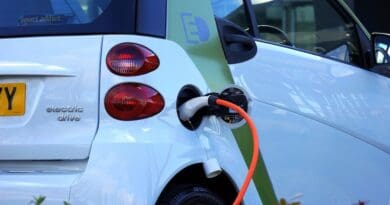HMRC cuts EV mileage rate for business drivers
HMRC has cut the business mileage rate for electric vehicles by 1p per mile.
The new advisory electric rates (AER) which came into effect on 1 June, mean that employees can now only claim 8p per mile (ppm) when using an EV for work.
The reimbursement rate, which is widely used by businesses, is reviewed every quarter and was held at 9ppm in the previous quarter having previously been reduced from 10ppm.
The move reflects the most recent drop in domestic energy prices but will dismay any business driver who uses public charging.
The AER for electric cars is calculated using electrical price data from the Department for Energy Security and Net Zero Office for National Statistics and an average vehicle energy consumption based on company car sales data from the last three years and car electrical consumption rates from the Department for Transport.
The new 8ppm covers the new domestic price cap of 22.36p/kWh at an average consumption of 3m/kWh. However, company car drivers using public chargers, which can cost up to 84p/kWh face being left significantly out of pocket or their employer having to justify to HMRC paying a higher rate.
The Association of Fleet Professionals (AFP) has called for a rethink of the flat-rate AER in the face of such issues and the fact many drivers use a combination of home, low-speed kerbside and high-speed public chargers. It has suggested multiple rates that reflect different vehicle’s efficiency in the same way petrol and diesel rates do, as well as reacting to different charging situations.
In its latest Tax and Regulation Manifesto, published ahead of July’s General Election, the AFP said: “We believe that having one rate for all vehicles – covering every vehicle from small cars to large vans – doesn’t work, especially with the one rate only focusing on those that charge at home.
“We believe there should be four rates as opposed to one. A rate for cars with access to home charging, a rate for cars without access to home charging, a rate for vans with access to home charging and a rate for vans that are charged on the public network. The cost disparity between a small electric car that is predominantly charged at home and a van that is charged using the public network is significant and one AER to cover all vehicles and charging types doesn’t suffice.”






